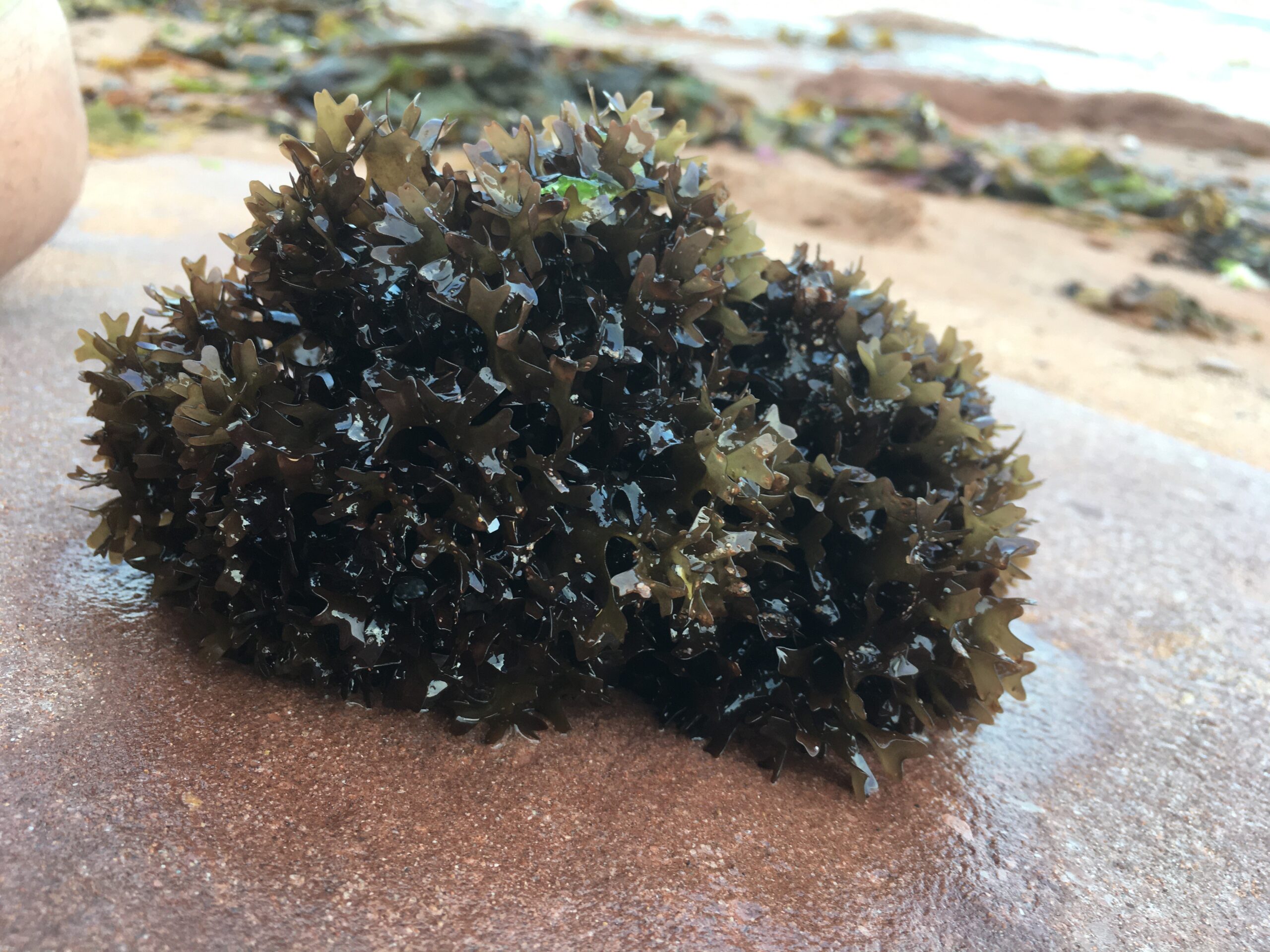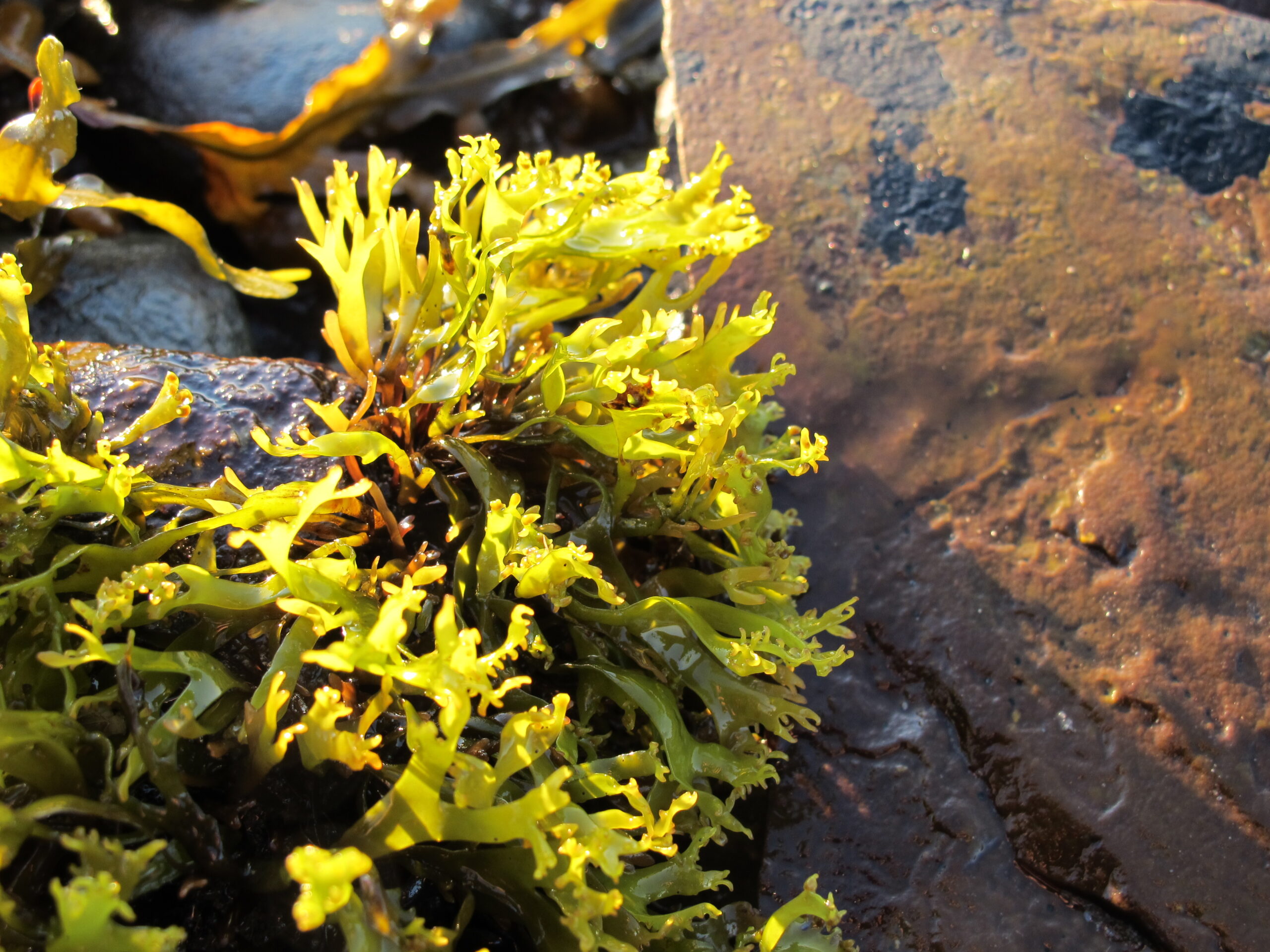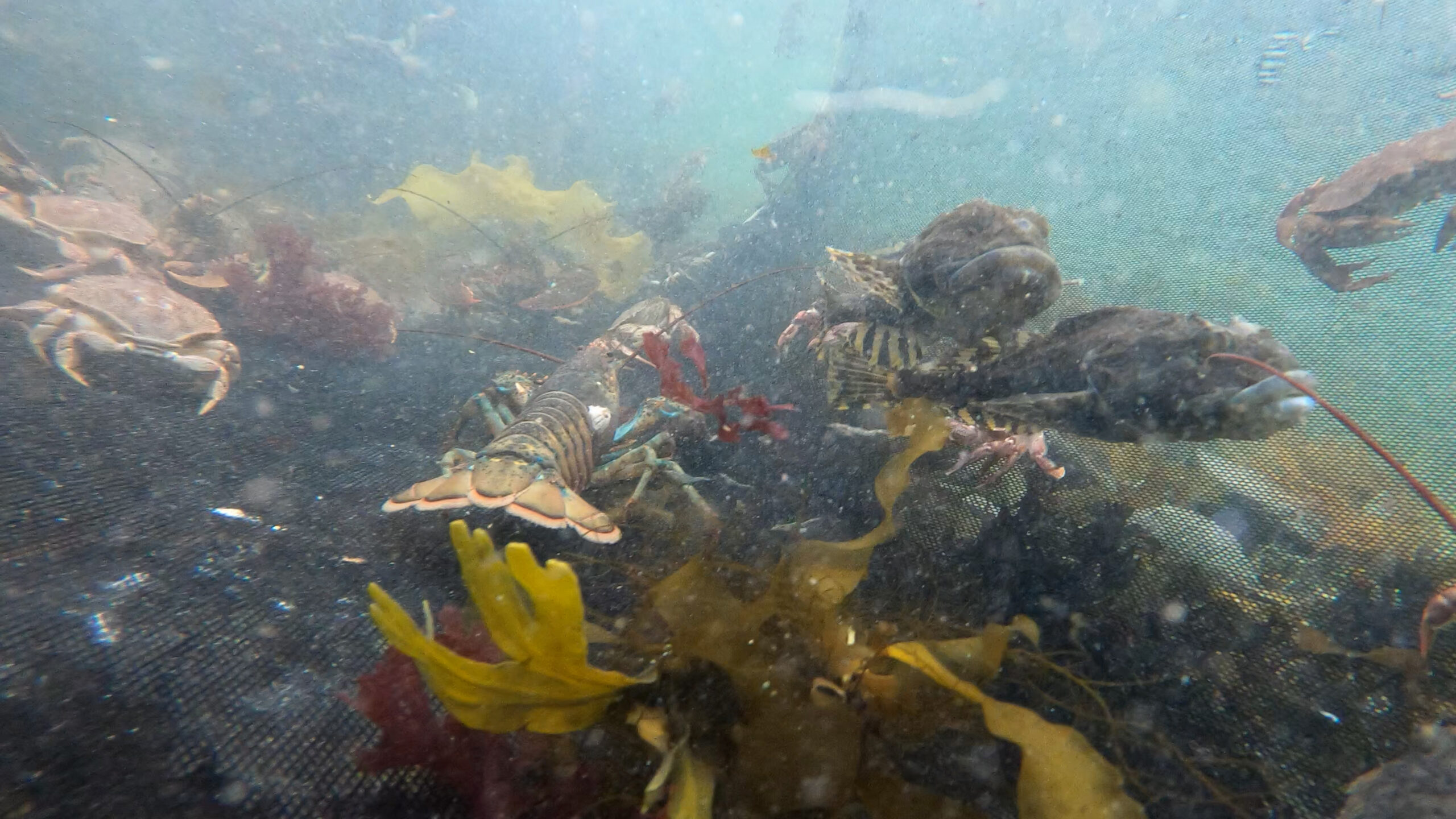
SIZE:
10 to 20 cm.
LIFE EXPECTANCY:
Up to 4 years.
LIFE CYCLE:
Mature at 3 to 5 years of age.
Reproduction can take place all year round, but summer and autumn are more favourable.
Although Irish moss tolerates dynamic environments, it grows faster in calmer sites.
In Irish moss fields,
three stages of algae coexist: the female stage, the male stage and the spore-producing stage. Regardless of the stage, the algae have the same appearance.
Reproduction occurs through fertilization between the male and female cells, followed by the release of spores* by the female; these spores will germinate to form new algae.
Irish moss grows from its tips. If cut, it can quickly grow back from its holdfast.

In sunlight, Irish moss will take on a more greenish coloration.
Credit : Éric Tamigneaux, photo taken in 2021.
Irish moss is a small seaweed that looks somewhat like a bunch of parsley. Its fronds are curly with rounded tips. Its colour is quite variable: from violet-red to brown or yellowish green with iridescent highlights. High exposure to the sun makes it greener or even white if exposure is too intense. At the end of its life, Irish moss becomes whitish. Its stipe is short and flat. It has a strong, disk-shaped holdfast.
A multicoloured salad
Today, Irish moss is grown on a large scale in land-based ponds by Acadian Seaplants in Nova Scotia. By adjusting the cultivation parameters, the company is able to obtain Irish moss of different colours, resulting in a colourful salad.
Coastal zone, up to 10 m deep, in cold waters.
Temperatures that are too warm or freezing are lethal for Irish moss. However, it tolerates brackish waters.
Irish moss forms dense colonies that can look like a thick carpet when found in abundance.
It often coexists with rockweed. Along the southern Gaspé Peninsula, it can also be found among fields of kelp at between 1 and 5 m depth.

Irish moss prefers calm environments, on flat rocks.
Credit : Éric Tamigneaux, photo taken in Maine, in 2012.
PREYS:
CO2
Solar energy
PREDATORS:
Herbivorous molluscs
Grazing fish
MACHINES:
Hand harvesting.
REGULATIONS:
Permit required. Cut the algae with a sharp object to avoid tearing the holdfast.
Quite the fleet for Irish moss
After the Second World War, Irish moss was widely harvested. On foot, on horseback or by boat, the people of the Maritime provinces harvested it in large numbers. Until the end of the twentieth century, this alga was the primary source of carrageenan, a substance with gelling properties widely used in the food industry.
Irish moss is a Smarter seafood-listed species.
BENEFITS:
Source of protein, fibre, minerals and carrageenan (gelling food agent).
LET’S COOK:
Mild iodized, marine flavour.
Irish moss can be used as a clarifying agent in the brewing of artisan beers or as a thickener in soups, jams, stews, etc.
OUR CULINARY ADVICE:
- Use Irish moss for milk-based desserts. Boil it in milk, strain the mixture and then add your choice of ingredients (chocolate or vanilla, for example).
The waters of the St. Lawrence are known for their good quality. However, as algae absorb the elements present in the water to grow, it is preferable to ensure that the harvesting site is clean before eating this species fresh.
An alga at the origin of pudding
The word “carrageenan” comes from the village of Carragheen in Ireland. It was here that Irish moss was boiled in milk to produce the first pudding. The interaction of carrageenan and casein, a milk protein, promotes gelling.
Oo prevent the algal pigments from turning the milk green, the alga was traditionally left in the sun and rain after harvesting until it had dried and whitened.






